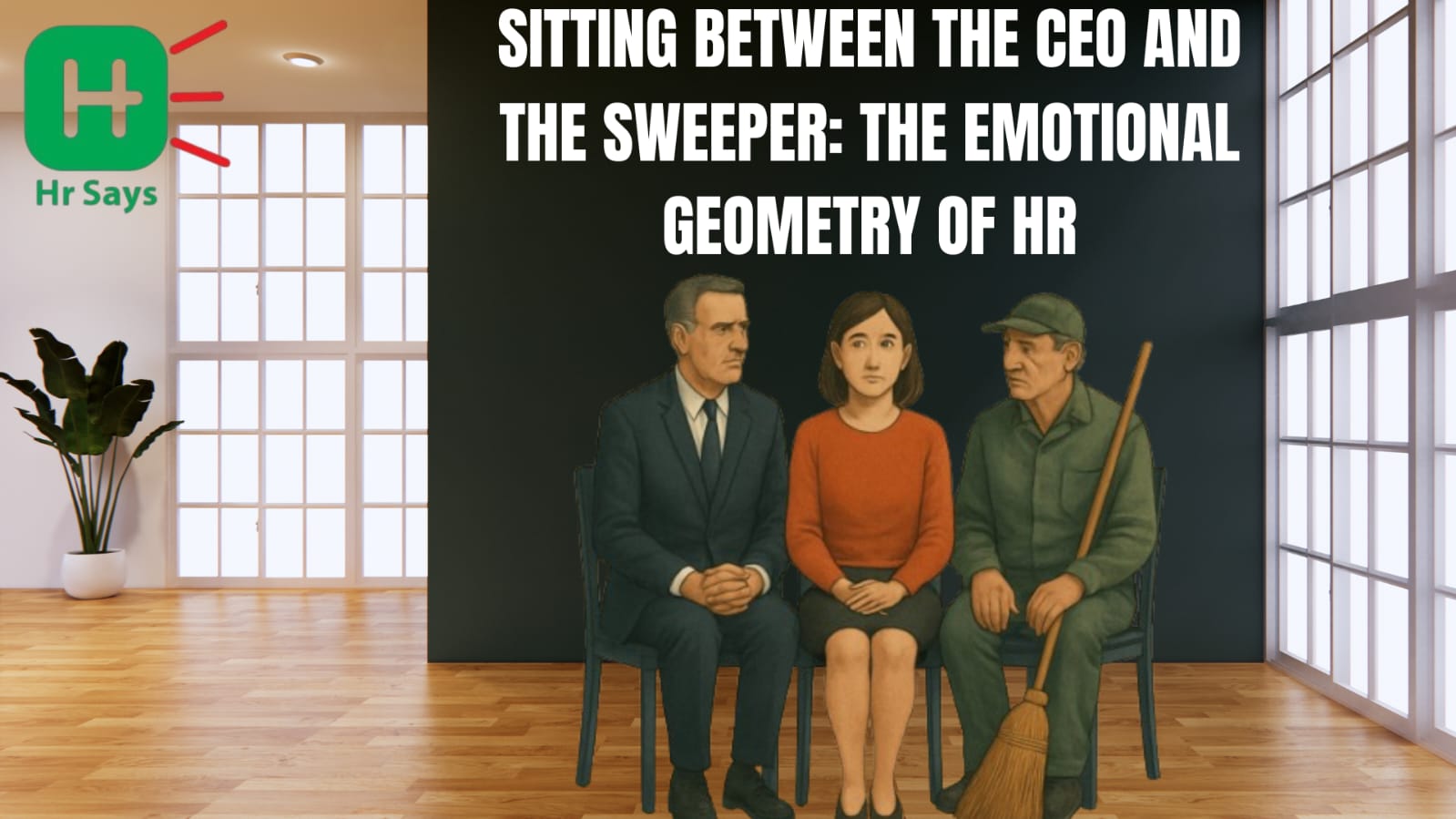There is a strange but sacred place in the organization where HR finds themselves. Right between the corner office and the broom closet, between policy and pain, between vision boards and real lives. It's not a place marked on the floor plan, but every HR professional knows it well. This invisible line we walk, daily, is where decisions meet dignity, where hierarchy meets humanity, and where the true emotional geometry of work unfolds.
Some days, I find myself sitting across from the CEO, discussing workforce strategy, digital transformation, talent analytics, or the latest HR tech tool that promises to revolutionize engagement. There is data, there is logic, and there is future focused language, all part of shaping the top-line growth. We talk about restructuring, succession planning, automation, and profitability. It's the world of metrics and margins, where leadership dreams are drawn in numbers and slides.
But just a few hours later, I might find myself in a quiet corner of the cafeteria, sitting with the office sweeper. No PowerPoints, no dashboards just eyes full of tired stories. Sometimes it's about a sick child, sometimes about rising rent, sometimes just a need to be heard. And it’s in that moment that I feel the full weight of what it means to be in HR, to carry both the aspirations of the top and the anxieties of the base, and to honor both without bias.
This isn’t a balancing act. It’s not about diplomacy. It’s a geometry of emotion, where HR professionals are the connective tissue in a company’s nervous system. We are neither above nor below. We are in between. And this in between space is where empathy gets tested and refined, where fairness must coexist with business sense, and where every word must carry both authority and compassion.
In a single day, we might move from handling a workplace harassment complaint to designing a rewards strategy for high performers. From organizing leadership offsites to ensuring a security guard receives his ESI benefits. From framing DEI policies to explaining leave balances to a housekeeping staffer. The job is not glamorous. It’s granular. It’s made of a thousand small human threads that hold a workplace together, often unnoticed, often uncelebrated.
We are expected to speak the language of the boardroom while understanding the silence of the floor staff. We write policies for all but tailor conversations one on one. And while others see performance reviews and attendance sheets, we see the human behind the role, the story behind the resignation, the reason behind the drop in motivation. Ours is not just a role of systems but of subtle signals. And that requires us to keep our emotional antennas constantly active.
There is a particular kind of fatigue that comes from being everyone’s sounding board. It’s the quiet heaviness of carrying stories you can’t share, emotions you must process alone, and decisions you must communicate even when you don’t always agree. Yet we show up. Not because it’s easy, but because we believe in the fabric of the workplace. We believe in creating spaces where the CEO and the sweeper can both feel respected, valued, and seen.
True HR leadership is not found in frameworks. It is found in presence. In how we show up for every level, every voice, every moment. It’s found in our ability to build culture without headlines, to drive change without resistance, and to make people feel human in a system that is becoming increasingly robotic. As organizations chase digital excellence, it is HR that must protect emotional intelligence. Not just as a buzzword, but as a living experience.
And perhaps that is our real role, to be the emotional geometry of the workplace. To sit in that powerful, invisible space between the highest and the humblest, and hold them both with equal dignity. Because the strength of any company does not come from how it treats its top performers alone, but from how it treats its quiet contributors. And it is HR that ensures the line between them isn’t a wall, but a bridge.
At hrsays.in, we honour this silent architecture. We believe in the power of stories that emerge from the corridors, not just the boardrooms. Because if there’s one place where leadership and empathy must coexist it’s right here, in the seat that sits between the CEO and the sweeper

 The strength of any company does not come from how it treats its top performers alone, but from how it treats its quiet contributors. And it is HR that ensures the line between them isn’t a wall, but a bridge.
The strength of any company does not come from how it treats its top performers alone, but from how it treats its quiet contributors. And it is HR that ensures the line between them isn’t a wall, but a bridge.












.jpeg)
.jpeg)

.jpeg)

.jpeg)


.jpeg)

.jpeg)

.jpeg)


